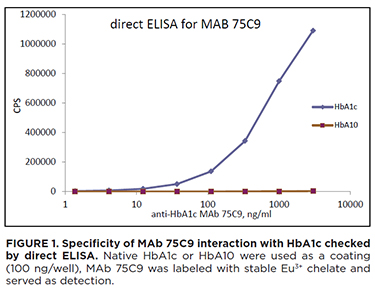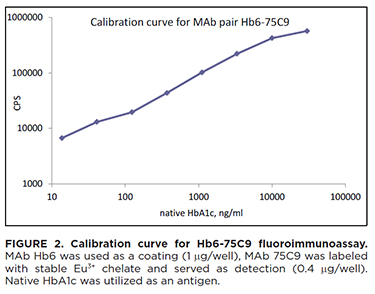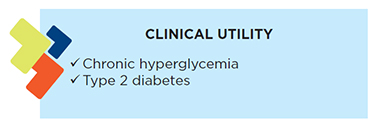
Diabetes is one of the most challenging health problems in the 21st century and it is among leading causes of death in most developed economies but alarmingly also in developing economies. Diabetes causes substantial health costs because of complications often associated with it such as coronary artery and peripheral vascular disease, stroke, diabetic neuropathy, amputations, renal failure and blindness.
Type 2 diabetes is defined by the presence of markedly elevated levels of plasma glucose (hyperglycemia). Repeated glucose measurements are an essential part of diabetes daily care but other tools are needed to assess patients’ long term glycemic control as blood glucose levels fluctuate markedly during the day. Number of studies have shown that glycated hemoglobin HbA1c concentration (percentage of HbA1c to total hemoglobin content) provides a better estimate of average hyperglycemia than routine determinations of blood glucose concentration, and it is the most widely used index of chronic hyperglycemia. HbA1c content provides information about glucose concentration in the blood during last 2-3 months and therefore it has been used to monitor treatment in patients with type 2 diabetes. HbA1c measurement has been recommended to use in diagnosis of type 2 diabetes by American Diabetes Association, World Health Organization and and International Diabetes Federation.
Glycation of proteins in blood circulation is a non-enzymatic process of glucose addition to proteins and majority of proteins are glycated in the bloodstream and therefore long-lived blood proteins may serve as an indirect estimate of glucose concentration in the bloodstream. Hemoglobin is an intracellular tetrameric protein whose lifespan is around 120 days. Hemoglobin consists of 4 polypeptide chains: 2 α-globins and 2 β-globins. It is known that hemoglobin has several amino acid residues which may be glycated, but only glycation of α-NH2-group of N-terminal valine leads to a change of overall charge of the hemoglobin making it possible to use ion-exchange chromatography for HbA1c measurements. Chromatographic methods give accurate results but these cannot be used in point-of-care setting and therefore there is a need for reliable immunodiagnostic methods.
Hytest offers now a monoclonal antibody specific to HbA1c that may be used both in direct and sandwich ELISA.
Anti-human HbA1c monoclonal antibodies
Hybridoma clones were derived from the hybridization of Sp2/0 myeloma cells with spleen cells of Balb/c mice immunized with glycated synthetic peptide. Specificity of antibody has been checked in direct ELISA. Hb6 antibody reacts with both HbA1c and HbA10, whereas 75C9 detects only HbA1c (Fig. 1).

MAbs selected were tested in sandwich fluoroimmunoassay and MAb pair Hb6-75C9 was shown to detect specifically native glycated hemoglobin HbA1c (Fig. 2).

Ordering information:
 Diabetes is one of the most challenging health problems in the 21st century and it is among leading causes of death in most developed economies but alarmingly also in developing economies. Diabetes causes substantial health costs because of complications often associated with it such as coronary artery and peripheral vascular disease, stroke, diabetic neuropathy, amputations, renal failure and blindness.
Diabetes is one of the most challenging health problems in the 21st century and it is among leading causes of death in most developed economies but alarmingly also in developing economies. Diabetes causes substantial health costs because of complications often associated with it such as coronary artery and peripheral vascular disease, stroke, diabetic neuropathy, amputations, renal failure and blindness. 
